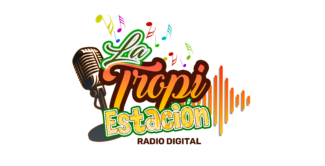Understanding the Mechanisms of Digital Radio
Digital radio represents a significant advancement over traditional analog broadcasting, primarily focusing on how audio signals are transmitted and received. At the heart of digital radio technology lies Digital Audio Broadcasting (DAB), a method that employs digital encoding to transmit radio signals. Unlike analog signals, which continuously vary in amplitude or frequency, digital radio encodes sound into binary data, significantly improving the efficiency and quality of the broadcast.
With DAB, multiple stations can be transmitted on a single frequency channel, leading to a more efficient use of the radio spectrum. This multiplexing capability allows listeners access to a wider array of programming options without suffering from interference, a common issue in analog radio. Moreover, digital radio can transmit additional data alongside the audio, such as song titles, artist information, and even traffic updates, enriching the listening experience.
In addition to DAB, another vital component of digital radio’s evolution is internet streaming. As internet connectivity has become more ubiquitous, streaming services have emerged as viable alternatives to conventional radio broadcasting. Internet radio allows users to listen to stations worldwide without geographical limitations, granting access to a diverse range of content that may not be available through traditional channels. This global approach to audio consumption expands listener possibilities, providing greater variety in musical genres, talk shows, and niche programming.
The advantages of digital radio are notable. Enhanced sound quality is one of the most significant benefits, as digital signals are less susceptible to environmental noise, resulting in clearer audio. The enhanced features offered by digital radio, including program information and data services, further elevate the user experience, enabling listeners to engage more deeply with the content they consume. These advancements illustrate how digital radio has transformed audio consumption, offering a more robust and enjoyable listening experience.
The Cultural Shift: How Digital Radio is Reshaping Listening Habits
The advent of digital radio has instigated a significant cultural shift in audio consumption, altering how audiences engage with music and audio content. Traditional radio, often characterized by rigid scheduling and limited programming, is giving way to a more diverse and accessible environment. Listeners now favor on-demand audio experiences, which provide unprecedented control over what, when, and how they listen. The rise of personalized playlists offers an enhanced listening experience, allowing users to curate their musical journeys according to individual preferences and moods.
Moreover, digital platforms have fostered the growth of niche genres and independent stations, effectively democratizing the audio landscape. As traditional barriers to entry have diminished, many independent artists and specialized stations have gained traction, catering to specific audiences who may have been overlooked by mainstream media. This has not only contributed to a more varied audio landscape but has simultaneously cultivated a sense of community among listeners who share similar interests in unique musical and audio expressions.
Additionally, social media and mobile applications play a vital role in this cultural transformation. They serve as active conduits for promoting digital radio, enabling broadcasters and listeners to connect and engage in real-time discussions. Features such as sharing playlists, commenting on shows, and participating in live broadcasts amplify listener interaction, building a stronger sense of belonging within specific audio communities. This engagement enhances the overall experience, making digital radio more than just a medium but a participatory space where audiences can collaboratively explore and celebrate diverse audio content.
In conclusion, the evolution of digital radio is reshaping listening habits and contributing to the broader cultural narrative of popular culture. By embracing innovation and technology, it has redefined what it means to consume audio, enabling a more personalized and inclusive approach to engagement and community building in the sonic realm.
